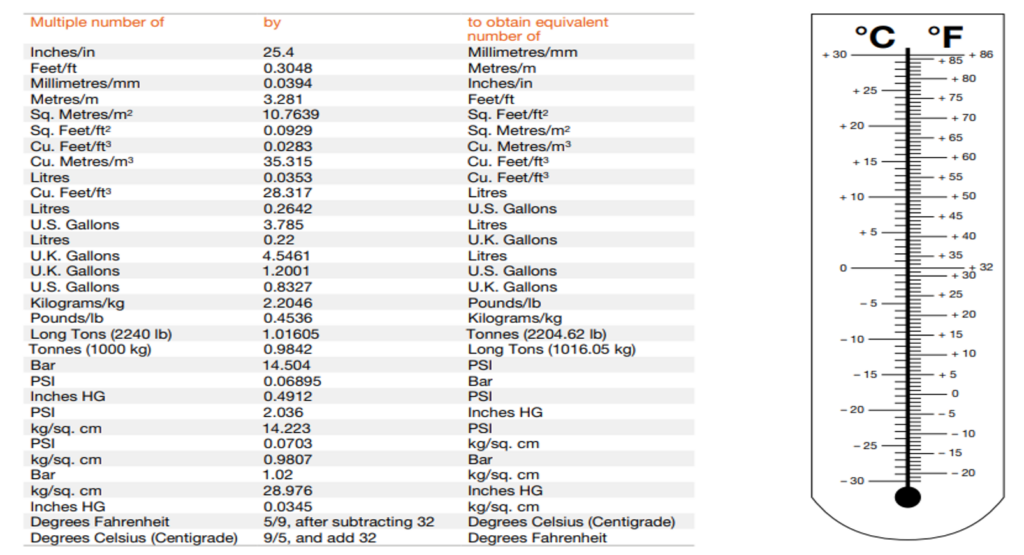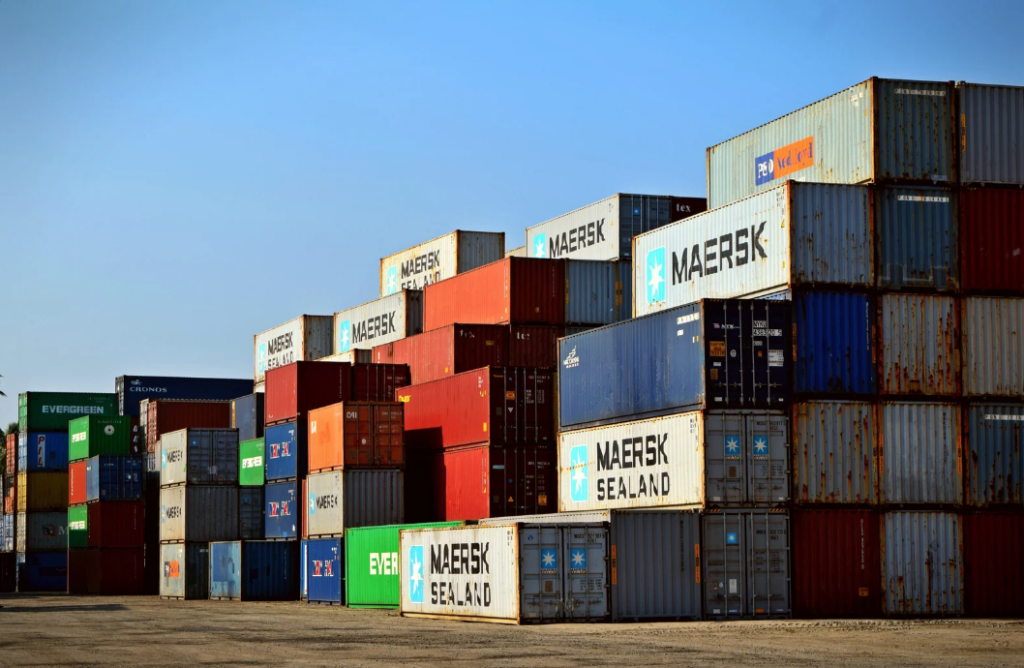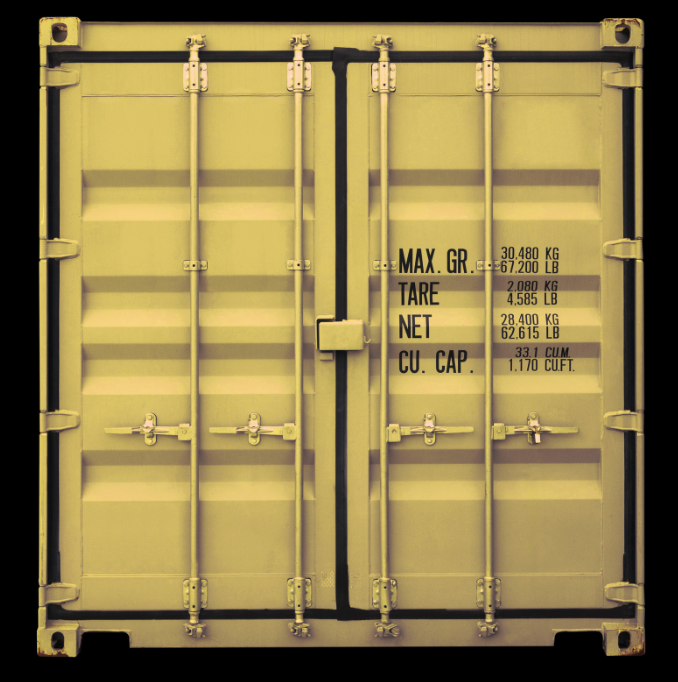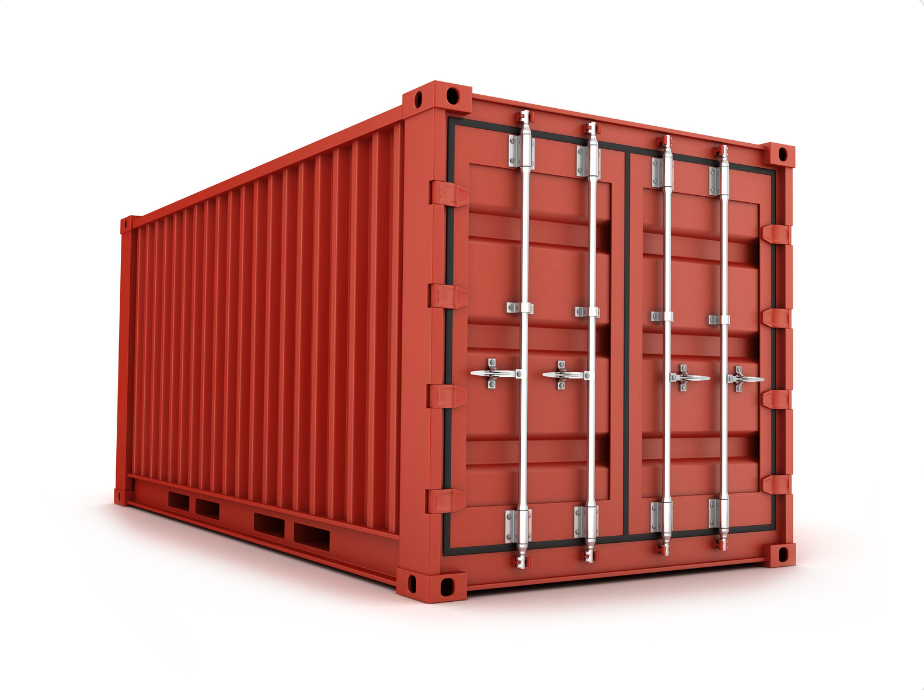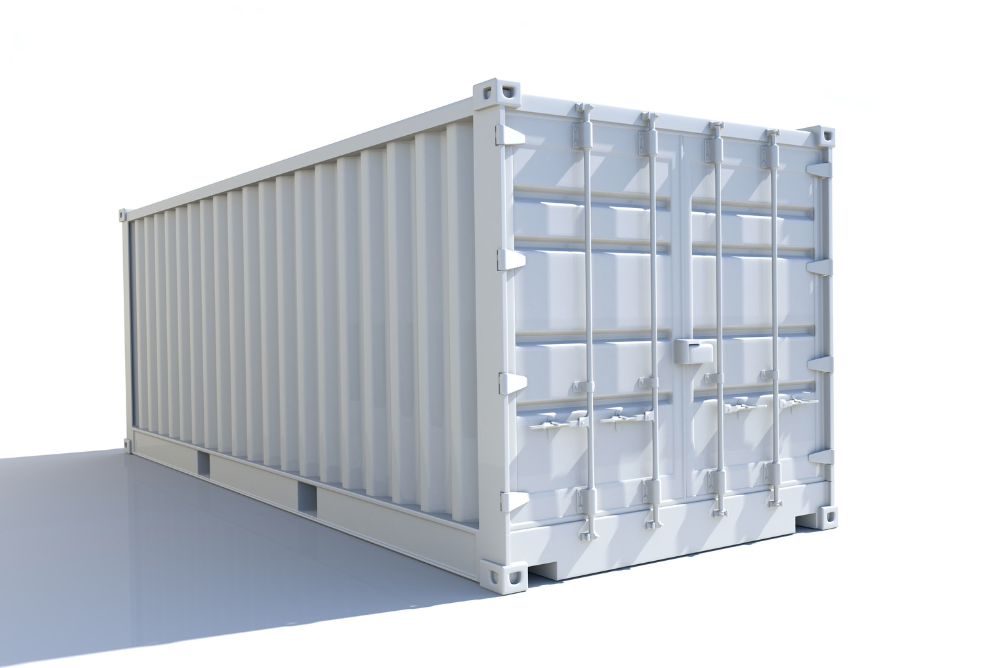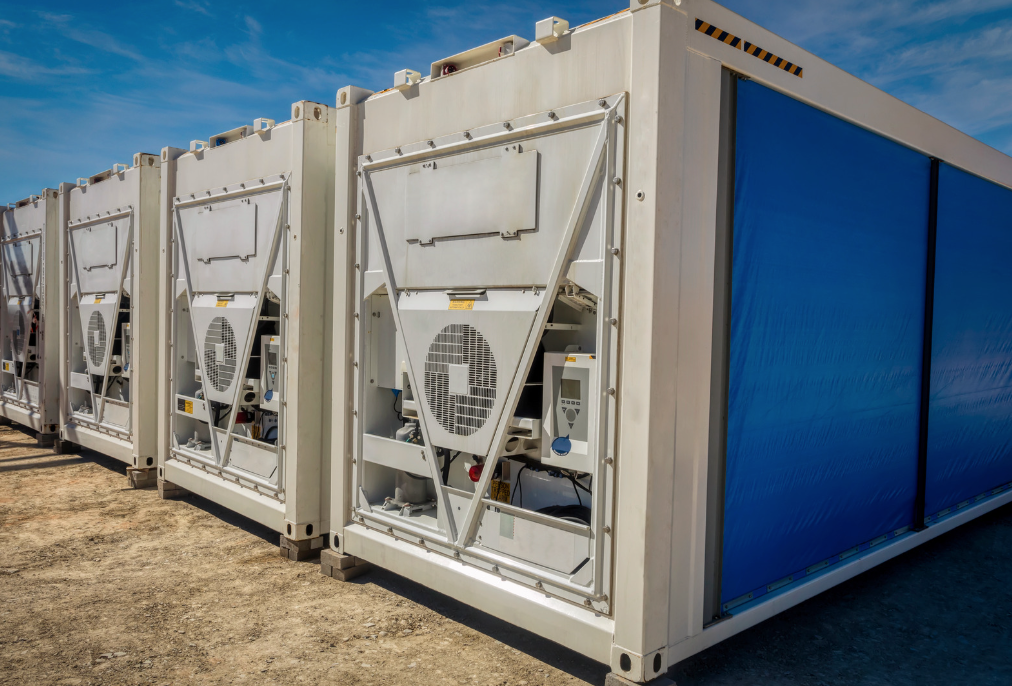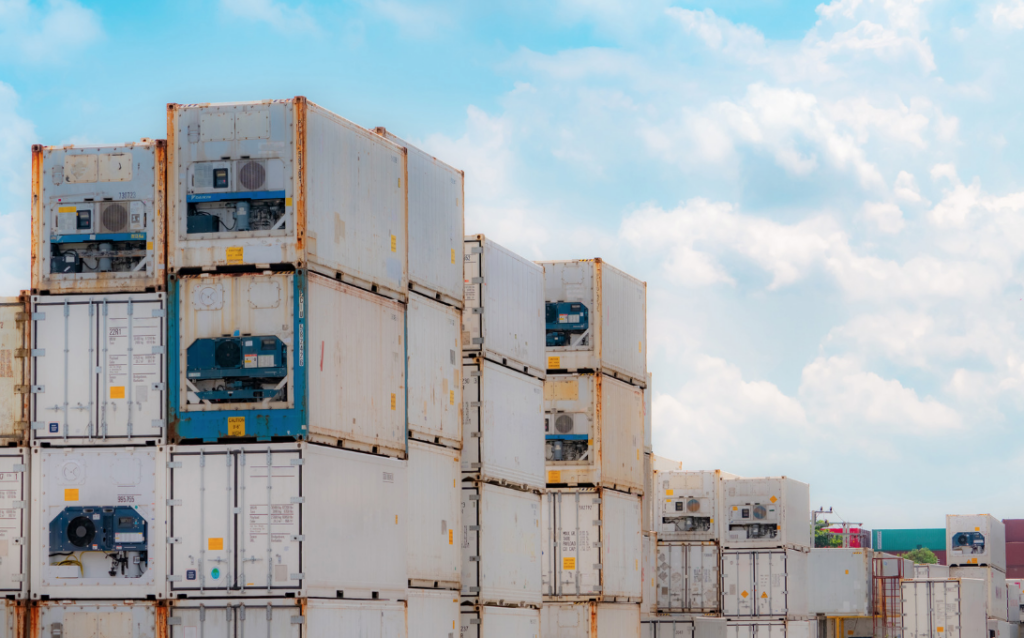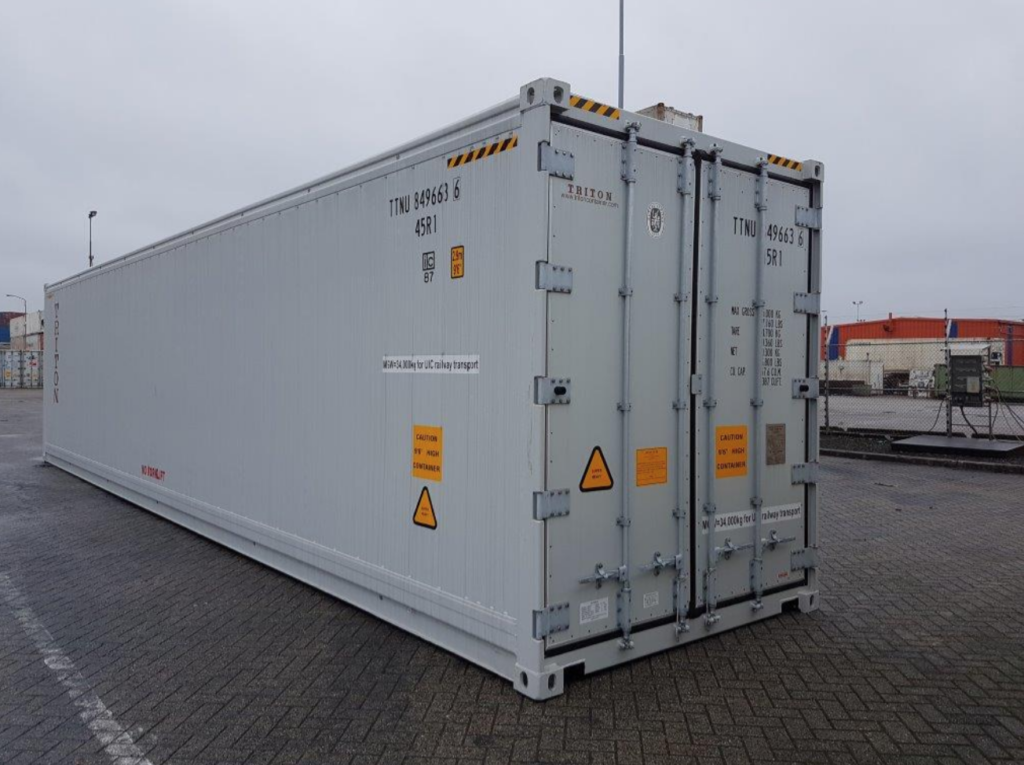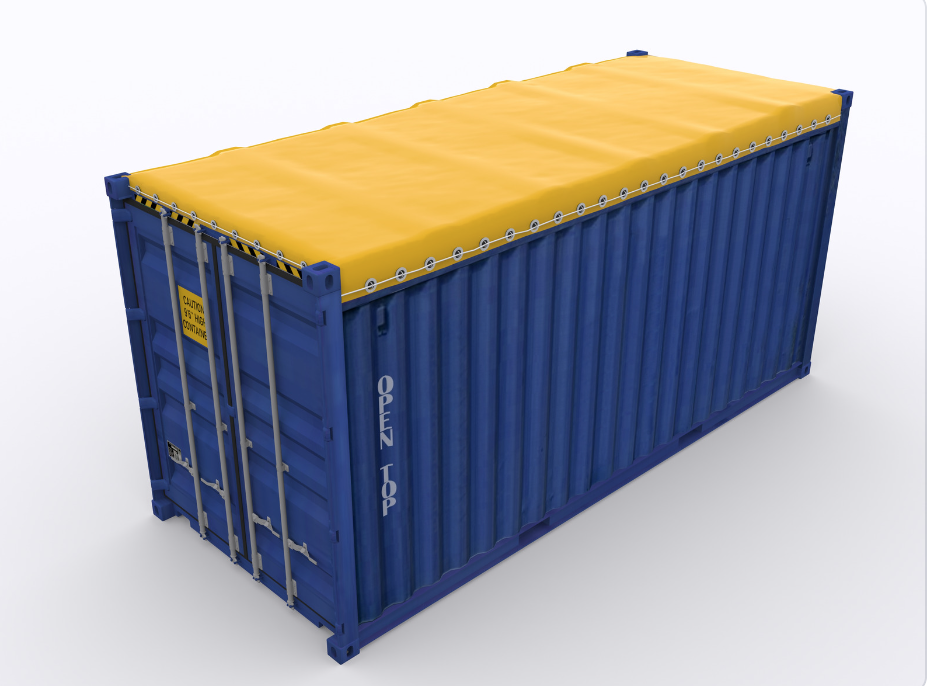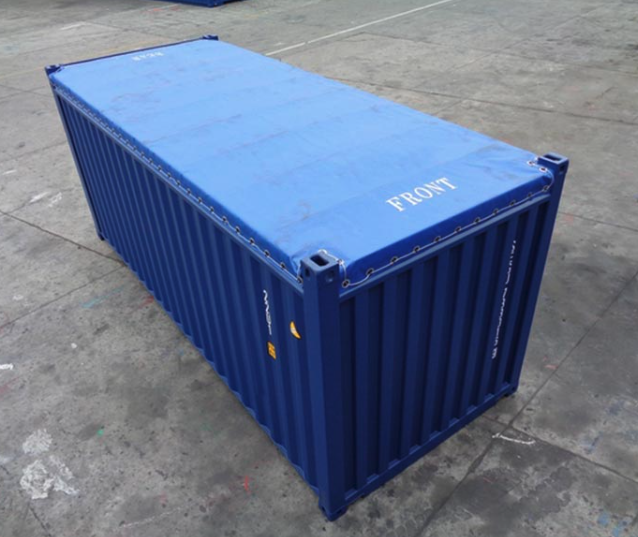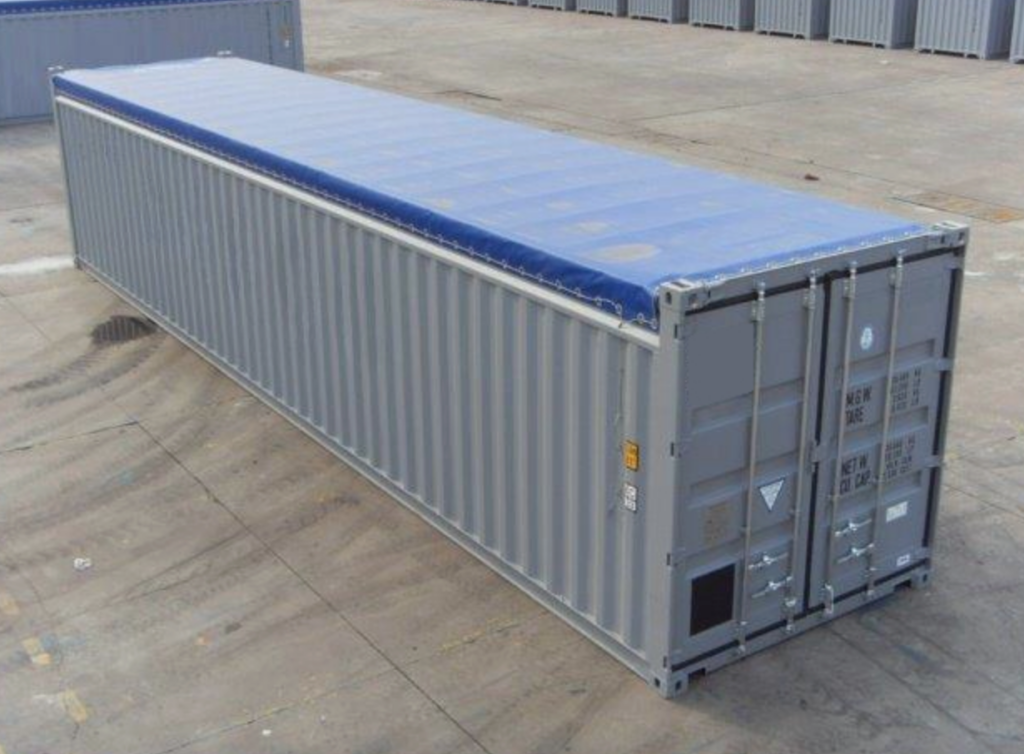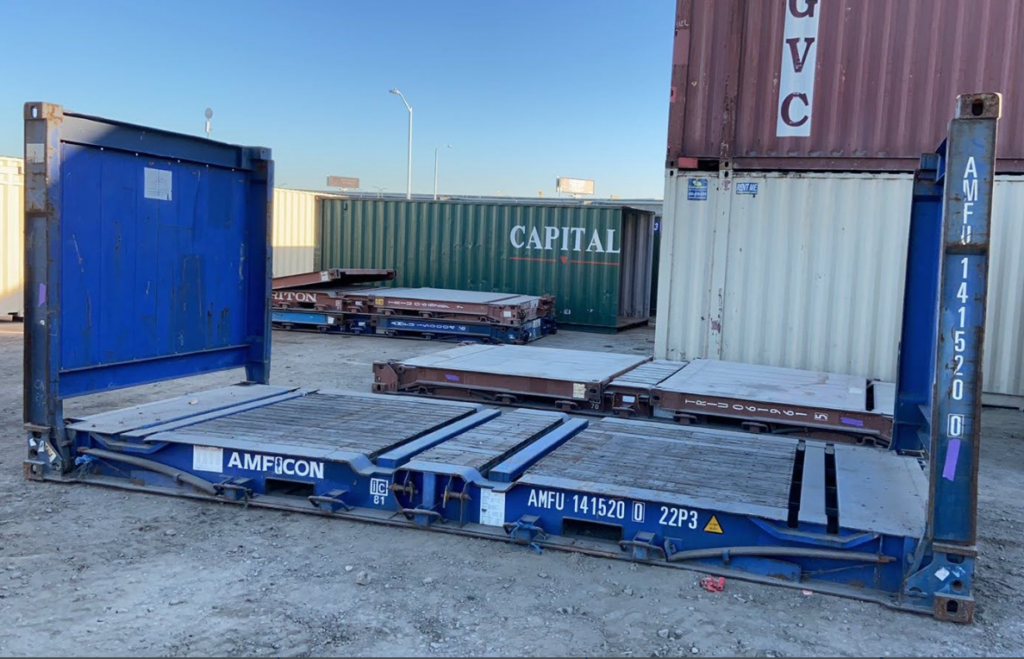Container types and sizes: which container is the right container for your shipment?
Container dimensions and types
The imperial unit measure system and not the metric system is used for container sizes, therefore container sizes are expressed in foot and the quantity of containers in TEU (Twenty-foot Equivalent Unit) so 1 x 20’ container = 1 TEU and 1 x 40’ container = 2 TEUS.
The main difference between the standard container (dry container) and other container types is that dry van containers are hermetically sealed and do not have refrigeration or ventilation systems, as it is the case with refrigerated or ventilated containers.
If the cargo is more than 30 m3 and weighs less than 26 tonnes, the right thing to do is to choose a 40-foot container.
If the cargo has a volume up to 30 m3, the most appropriate container would be a 20-foot container which can load up to 28 tons.
The container tare (weight of the container empty) and the volume capacity in m3 are also mentioned on the container’s door.
The main container types used in the shipping industry are
- 20' Dry Container
- 40' Dry Container
- 40’ High Cube Dry container
- 20’ & 40’ Open Top containers
- 20’ & 40’ Reefer containers
- 20' & 40’ Flat Rack containers
- 20’ Tank container
Kindly note that container dimensions may vary depending on container series, container manufacturer, the age of the container as well as the shipping line owner of the container. The information mentioned below is however most representative
Standard dry containers
20’ Dry container
Internal Dimensions
Length: 5,90m
Width: 2,35m
Height: 2,39m
Door Opening
Width: 2,34m
Height: 2,28m
Maximum payload Weight
28’200 kg (some containers can take up to 30’200kg, they are called 20’Heavy tested containers)
Capacity: 33,2m3
Its base allows the transport of up to 11 stacks of European pallets or 10 stacks of standard pallets.
The 20’ standard container is also known as 20-foot dry container, 20-ft dry van container and 20’ft general purpose container.
Commonly referred to as 20’DV, 22’GP, 22’G0 or 22’G1
40’ Dry container
Internal Dimensions
Length: 12,03m
Width: 2,35m
Height: 2,39m
Door Opening
Width: 2,34m
Height: 2,28m
Maximum payload Weight
26’700kg to 28’200kg
Capacity: 67,7m3
Its base allows up to 25 stacks of Euro pallets to be transported.
The standard 40-foot container is also known as a 40’ dry container, 40’ dry van container or 40’ general purpose container.
The market is increasingly asking for 40’High cube containers due to the extra cargo that can fit inside so the 40’ dry container is slowly being totally replaced by 40’High cube containers.
Commonly referred to as 40’DV, 40’GP, 42’G0 or 42’G1
40’ High-Cube container
Internal Dimensions
Length: 12,03m
Width: 2,35m
Height: 2,70m
Door Opening
Width: 2,34m
Height: 2,58m
Maximum payload Weight
26’500kg to 28’600kg
Capacity: 76,4m3
Its base allows up to 25 stacks of Euro pallets to be transported. Commonly referred to as 40’HC, 40’HQ, 45’G0 or 45’G1.
These boxes correspond to standard containers but are about 30cm higher.
45’ High-Cube container (not available in Africa trade in general)
Internal Dimensions
Length: 13,55m
Width: 2,35m
Height: 2,70m
Door Opening
Width: 2,34m
Height: 2,58m
Maximum payload Weight
25’700kg
Capacity: 86,0m3
45’ containers are mainly used for shipping on the Transpacific routes from Asia to North America and not all shipping companies have this type of container within their container stock.
Commonly referred to as 45’HC or L5’G1
Reefer (refrigerated) containers
Reefer containers (20’ and 40’) are used to transport chilled or frozen products. Fresh food is not permitted to be shipped unless it is in a refrigerated container.
These containers are used to transport fresh and frozen food, such as fish, meat, and fruit as well as other perishable cargoes. They are also commonly used in the transport pharmaceutical products.
You need to clearly indicate to us the temperature (in C°) at which the goods need to be carried before loading the goods in a reefer container.
The refrigerated container has a system that maintains a temperature inside the container of between -25 C° and +25 C°.
Contrary to widespread belief, these containers cannot cool the temperature because they do not generate cold air but can only maintain it.
Although this type of container has an integrated motor that enables temperature cooling, the system must be connected to the power grid of vessels, to reefer plug infrastructure in the ports, or to a genset on trucks for inland transport.
Some special types of refrigerated containers can maintain temperatures as low as -60° (deep frozen reefer containers).
20’ Reefer container
Internal Dimensions
Length: 5,45m
Width: 2,29m
Height: 2,16m
Door Opening
Width: 2,29m
Height: 2,26m
Maximum payload Weight
27’500kg
Capacity: 28,3m3
Commonly referred to as 20’RF, 20’RE or 22’R1.
This container type is mainly used to transport chilled cargo.
40' High-Cube reefer container
Internal Dimensions
Length: 11,59m
Width: 2,29m
Height: 2,40m
Door Opening
Width: 2,29m
Height: 2,57m
Maximum payload Weight
30’200kg
Capacity: 67,9m3
Commonly referred to as 40’RF, 40’RH or 45’R1
Special equipment
Open-top containers
This box is also a variant of the standard 20’ or 40’ft container.
Unlike the Hardtop container, the roof is made of a tarpaulin.
As a result, the container cannot be stacked. The advantage is fast loading and unloading and a lower price.
In addition, the tarpaulin can cover oversized goods (in height) and thus protect them.
The type of goods carried in this type of container is essentially the same as in a flatbed container, but with more regular measurements on the sides.
It is suitable for loads that are too high and do not fit into a standard dry van container.
Unlike the flat rack, which also has no roof, the open top container has side walls, and the roof can also be covered with a tarpaulin so that the goods travel more protected.
Note that the open part of an open top container is slightly smaller than the inside of the container, as is the case with the doors of an ordinary container.
In other words, when loading your goods from the top of an open container, consider that you will have less room to manoeuvre than inside a standard container.
The demand for this type of containers is much lower and shipping line’s Open Top container stock is quite limited in some areas, therefore a special equipment surcharge is applied on top of the ocean freight for standard dry van containers, the surcharge will also depend on the weight of the Open top container as the lost slots incurring from the loading of an Open Top on board the vessel must be calculated.
20' open-top container
Internal Dimensions
Length: 5,9m
Width: 2,35m
Height: 2,35m
Door Opening
Width: 2,25m
Length: 5,38m
Maximum payload Weight
28’100kg
Capacity: 33,2m3
Commonly referred to as 20’OT or 22’U1
40' open-top container
Internal Dimensions
Length: 12,03m
Width: 2,35m
Height: 2,39m
Door Opening
Width: 2,25m
Length: 11,51m
Maximum payload Weight
26’500kg
Capacity: 66,5m3
Commonly referred to as 40’OT or 42’U1
Flat rack container
Flatbed containers are designed to accommodate all loads whose dimensions, package distribution or weight do not allow them to be transported in standard containers or dry vans, whether they are 20’ or 40’.
These containers have no side walls. The walls make it possible to secure the load laterally by means of supports and to stack the boxes. The floor is particularly reinforced so that flat containers are mainly suitable for very heavy and bulky goods that must be loaded from the side.
Flat racks are made of metal plates that fit into a standard 20’ or 40’ft structure.
The sides are hinged and have no roof or top. They are therefore suitable for the transport of out of gauge cargo (goods with a height greater than that of a 20’ or 40’ container or with a very irregular volume, such as industrial vehicles or pipes and very heavy goods that need to be loaded into the container with cranes or specialised equipment.
As they have no sides or top, this type of container presents some additional complexities. The goods must travel exposed to rain, wind and other weather conditions and the only way to ensure that the cargo stays in place or inside the container and well protected is by securing and covering it properly.
20' Flat rack container
Internal Dimensions
Length: 5,96m
Width: 2,40m
Height: 2,29m
Between headers length
5,85m
Between corners
Length: 5,42m
Width: 2,06m
Maximum payload Weight
37’000kg
Commonly referred to as 20’FR, 20’FL, 20’PC or 22’P3
40' Flat rack container
Internal Dimensions
Length: 11,65m
Width: 2,35m
Height: 1,96m
Between headers length
12,06m
Between corners
Length: 11,66m
Width: 2,22m
Maximum payload Weight
44’600kg
Commonly referred to as 40’FR, 40’FL, 40’PC or 42’P3
Tank containers
Tank containers or ISO tanks are containers specially designed for the transport of liquids or gases.
They allow the transport of bulk cargo by sea, whether it is liquid foodstuffs such as oil or wine, or dangerous substances.
Tank containers carrying dangerous goods must comply with a few additional regulations.
In addition, once an iso tank has been marked for use as a container for dangerous cargoes, it can no longer be used for the transport of other conventional bulk cargoes.
In terms of structure, the tank or tanker moves within a frame that allows for stowage and conforms to ISO standard dimensions.
The tank is covered with an insulating material that protects it from the weather.
ISO tanks are one of the most efficient solutions for intermodal bulk transport. They have the advantage of being safer, more agile, more environmentally friendly, and more economical than other options such as drums.
The most common tank containers are 20’tank containers.
The tank container or ISO tank is also known as Iso tank, Tanktainer, Tank Container, Iso Tank Container.
20' Tank container
Nominal capacity
26’000 litres
Maximum payload Weight
32’500kg
Commonly referred to as 20’TK, 20’KL or T11
Conversion factors
